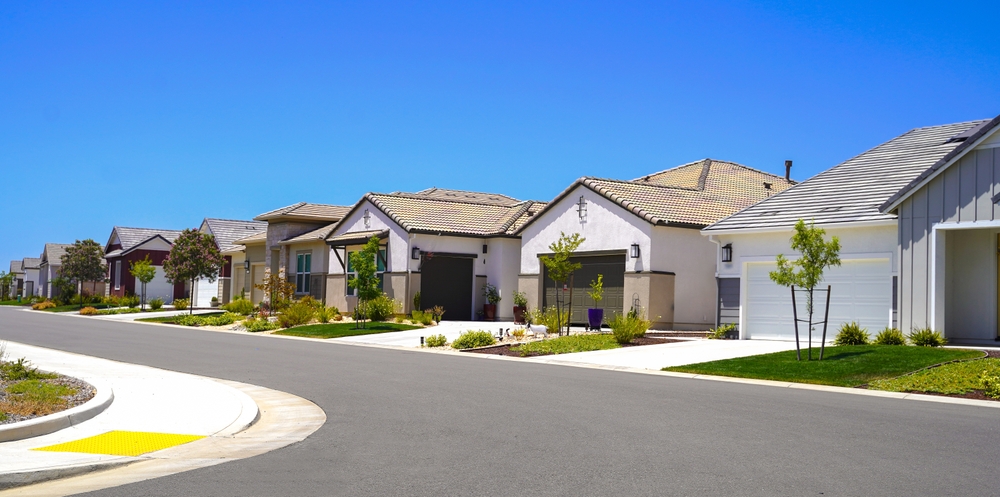Buying a home in today’s market feels like trying to thread a needle during an earthquake—prices are high, mortgage rates are stubborn, and competition remains fierce. It’s no wonder many potential buyers, especially younger Americans, are sitting on the sidelines, waiting for things to settle down. But according to a recent article from The Street, a shift could be on the horizon—one that might just change the way we think about homeownership altogether.
Berkshire Hathaway Home Services is predicting a resurgence in multigenerational living as a response to rising housing costs and broader economic pressures. If you’re unfamiliar with the concept, think of it as a throwback to the days when grandparents, parents, and children all shared one roof—only now with modern design, privacy features, and energy efficiency. Let’s break down why this trend is gaining traction and how it could reshape the housing market.
The Housing Market Is Tough Right Now
Over the last few years, buyers have been squeezed from both ends: sky-high home prices and increasing mortgage rates. For many, the dream of homeownership now comes with significant sacrifices. According to the article on The Street, the result is a growing number of Americans—especially younger generations—either delaying their home purchase or exploring new ways to make it more financially feasible.
Pair that with broader economic uncertainty, and it’s easy to see why people are hesitant. But out of this challenge comes an innovative solution that isn’t exactly new: multigenerational housing.
Why Multigenerational Living Is Making a Comeback
Living with multiple generations under one roof isn’t a radical idea—it’s how many families lived before the rise of suburban development after World War II. As housing became more affordable and the nuclear family ideal took root, extended family households declined. But now, with home prices averaging over $500,000 and mortgage rates hovering near 7%, more families are revisiting the benefits of shared living.
According to the U.S. Census, multigenerational households rose from 5.1 million in 2010 to 6 million in 2020. And as Berkshire Hathaway points out, this could just be the beginning. When families share housing costs, the benefits are immediate and tangible: pooled resources, shared utility and maintenance expenses, and built-in childcare and eldercare support.
Financial Relief and Emotional Support Under One Roof

Multigenerational living offers something the current housing model often doesn’t: flexibility. Young adults can save for their own home while contributing to household expenses, grandparents can age in place with the help of family, and working parents can get some much-needed support with childcare. Sharing a home also allows families to collectively manage financial priorities like paying off student loans, building emergency funds, or saving for future investments.
This model also combats the stress and isolation that often come with economic hardship. Family support, both emotional and practical, can go a long way in difficult times. And that’s not just feel-good fluff—it’s a critical part of what makes multigenerational living so sustainable.
A New Opportunity for Builders and Remodelers
Builders and designers are starting to take notice. According to Berkshire Hathaway Home Services, the shift presents a massive opportunity—not just for new construction, but for remodeling existing homes to better accommodate multiple generations. Think: private suites with separate entrances, flexible floor plans, and universal design features that support mobility and aging in place.
For homebuilders, tapping into this market could mean designing homes with dual master bedrooms, shared kitchens with extra storage, or separate living spaces that still promote togetherness. For remodelers, it’s a chance to reimagine homes for families that are blending generations and sharing responsibilities under one roof.
But There’s a Big Catch

There’s just one problem—most homes today are still designed for single-family living. That’s a major hurdle for buyers looking for multigenerational options. The housing inventory simply hasn’t caught up to this shifting demand.
Until more builders pivot or existing homes are updated, many families are left navigating how to adapt traditional spaces into multigenerational layouts. And that’s not easy or cheap. For this trend to take hold long-term, the industry needs to embrace innovation in both design and financing options that support multigenerational buyers.
Could This Be the Solution to the Affordability Crisis?
In a market where over 21 million renters are spending more than 30% of their income on housing, multigenerational living is more than a trend—it might be a lifeline. It’s not just about affordability; it’s about resilience. It’s about rethinking what “home” looks like and how we can better support each other in a changing economic landscape.
And maybe, just maybe, it’s about rediscovering the value of shared space—not just for the financial benefits, but for the richer, more connected lives that can come from living together.
Final Thoughts

Whether you’re a first-time buyer, a downsizing retiree, or a parent supporting adult children, multigenerational housing is a concept worth watching. As Berkshire Hathaway Home Services suggests, it could become one of the most influential trends in the housing industry in the years ahead. And for those who are willing to think beyond the traditional single-family model, it might offer not just a solution—but a better way forward.
If you’re looking for a home or thinking about how to stretch your dollars further, consider whether multigenerational living might work for your family. You may just find it brings more than financial savings—it could bring your family closer, too.

